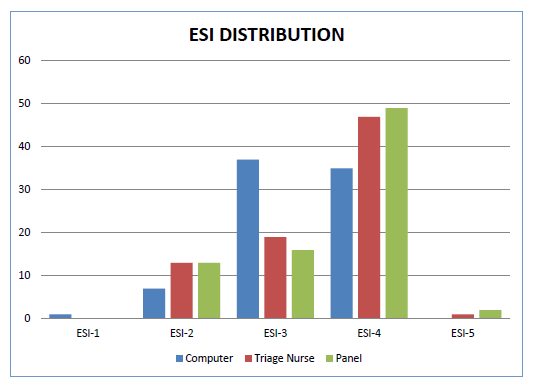Emergency Medicine
Session: Emergency Medicine 7: Emergency Medical Services
220 - Can a Computer Triage Patients Accurately Using Machine Learning?
Sunday, May 5, 2024
3:30 PM - 6:00 PM ET
Poster Number: 220
Publication Number: 220.1957
Publication Number: 220.1957
- CS
Curt Stankovic, MD, MBA (he/him/his)
Chief of Emergency Medicine
Central Michigan University College of Medicine
Northville, Michigan, United States
Presenting Author(s)
Background: Triage in an Emergency Department is a vital process because it stratifies patients into categories based on the potential time-sensitive needs of their medical condition. Therefore, the accuracy of the process is paramount to align resources with the severity of the disease.
The emergency severity index (ESI) is a commonly used triage system that stratifies patients based on the perceived utilization of resources in an ED. Patients are stratified into a numerical scale from 1-5.
Objective: We conducted a pilot study to learn if a computer can accurately triage children in an emergency department.
Design/Methods: We developed a computer-based algorithm, and parents answered a series of questions on an iPad. For this iteration, we only included children presenting to the emergency department (ED) with a chief complaint of cough. All patients were assigned a triage code using the ESI by the computer, and this was compared to the actual ESI assigned in the ED, as well as an expert panel. Interrater reliability between ESI scores was compared using kappa (ƙ). Agreement disparities were classified into groups (vital signs, exam, parental perception, history, and age). The next step is to refine triage accuracy using iterative machine learning. This study was approved by the IRB at Central Michigan University.
Results: Eighty patients were included in the study and were broadly assigned to ESI levels (Figure 1). Overall agreement between the computer and the actual triage code was fair (ƙ= 0.21, p-value=0.005). There was a near perfect agreement when the actual triage code and the expert panel were compared (ƙ=0.84, p-value=0). Agreement was stronger with high acuity compared to low acuity. When disagreement was sub analyzed, 3/39 were due to abnormal exam findings, 7/39 due to abnormal vital signs, 4/39 due to history, 1/39 due to patient age, and 24/39 due to parental perception of respiratory distress. When the ESI code was compared to reason for disagreement, 23/25 of low acuity (ESI-4) patients were perceived by the parent to have respiratory distress and 2/25 had a higher ESI due to historical factors.
Conclusion(s): A computer based algorithm does not accurately triage children who present to an emergency department with a cough. The model performs better with higher acuity patients, and including vital signs and exam findings may improve performance. Next, a machine learning system will attempt to improve triage accuracy.

